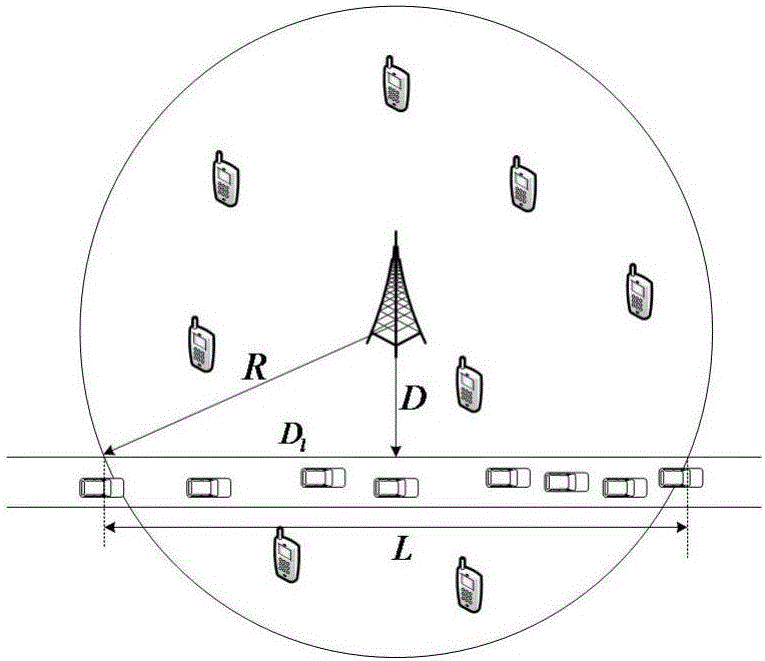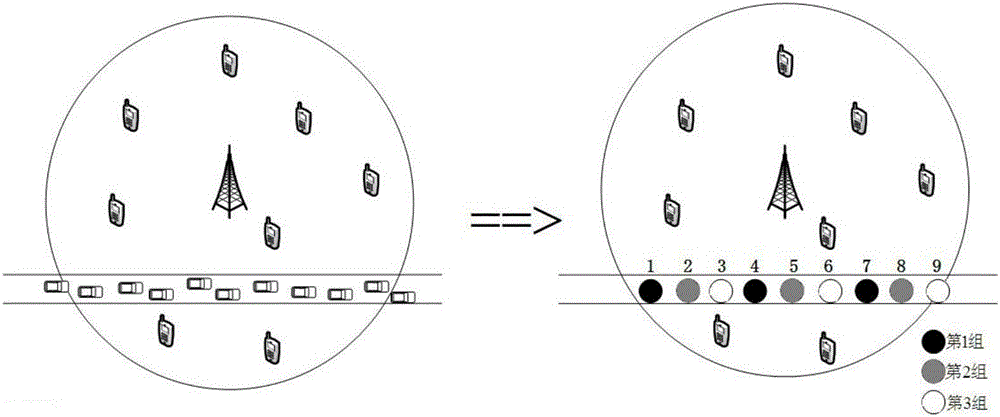Traffic flow dynamic grouping based LTE-D2D Internet of vehicles resource distribution method
A resource allocation and traffic flow technology, applied in the field of vehicle communication, can solve problems such as poor algorithm performance, less consideration of dynamic network environment, and low algorithm complexity, so as to reduce base station load, improve resource utilization, and improve system communication capacity Effect
- Summary
- Abstract
- Description
- Claims
- Application Information
AI Technical Summary
Problems solved by technology
Method used
Image
Examples
Embodiment Construction
[0030] specific implementation plan
[0031] The present invention will be further described in detail below through specific embodiments in conjunction with the accompanying drawings.
[0032] The scenario considered in the present invention is a single cell scenario, as shown in the attached figure 1 As shown, the base station BS is located in the center of the cell, and the cellular users are randomly distributed within the cell range. A straight road passes through the area covered by the base station. Vehicles drive on this road at a certain speed. It is assumed that the road is a one-way lane . Let the radius of the cell be R, the vertical distance from the base station to the road be D, and the length of the road in the coverage area of the cell be represented by L, and L=2D l ,in
[0033] In this system model, it is a dynamic process for the V2V link to apply for communication resources from the base station, which is assumed to obey the Poisson distribution. A...
PUM
 Login to View More
Login to View More Abstract
Description
Claims
Application Information
 Login to View More
Login to View More - R&D
- Intellectual Property
- Life Sciences
- Materials
- Tech Scout
- Unparalleled Data Quality
- Higher Quality Content
- 60% Fewer Hallucinations
Browse by: Latest US Patents, China's latest patents, Technical Efficacy Thesaurus, Application Domain, Technology Topic, Popular Technical Reports.
© 2025 PatSnap. All rights reserved.Legal|Privacy policy|Modern Slavery Act Transparency Statement|Sitemap|About US| Contact US: help@patsnap.com



